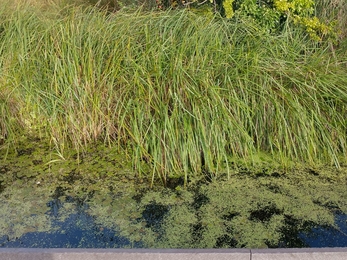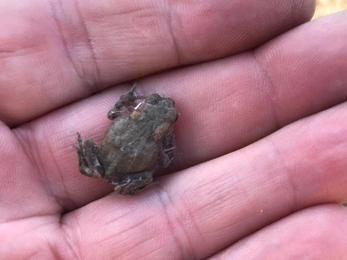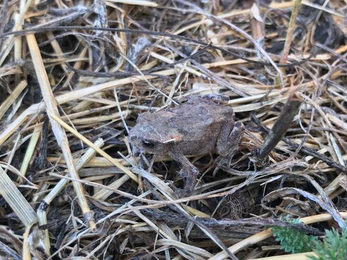Weekly wild news from our reserves - 16 September 2022
Kingfisher at Peto’s Marsh – Gavin Durrant
This fen raft spider guarding her hatchlings was seen directly opposite the pond dipping platform at Carlton Marshes. The wispy web isn’t obvious and is best viewed through binoculars.
Goat scented caterpillar
This striking goat moth caterpillar was discovered at Newbourne Springs by our South Suffolk Intern, Ella Broom. These red and orange caterpillars grow up to 10cm in length, burrowing into broadleaved trees like oak or ash, where they eat the wood and remain in the tree for up to five years. Around this time of year these caterpillars pupate, emerging from the tree and wrapping themselves in a cocoon of soil on the ground, where they overwinter. The adult moths are very large with grey, black and white markings, emerging in June or July. Goat moths got their name because these caterpillars have a distinctive goat like smell!

Goat moth caterpillar – Ella Broom
Prime perch for fishing
This kingfisher took advantage of a prime new fishing position thanks to our newly installed anti-predator fencing around Peto’s Marsh at Carlton. The fence is to deter foxes and badgers which can predate the wetland birds, it’s cleverly designed with the bottom beneath the water and the top bent over to prevent nimble climbers.
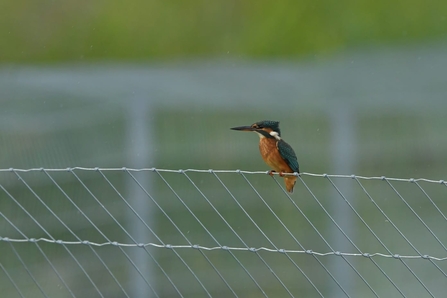
Kingfisher at Peto’s Marsh – Gavin Durrant
Smooth newt
This smooth newt (also known as common newt) was seen clambering through the bracken at Newbourne Springs. Newts are amphibians, breeding in ponds during the spring and spending most of the rest of the year feeding on invertebrates in woodland, hedgerows, marshes and tussocky grassland. In winter they hibernate underground, among tree roots and in old walls. The smooth newt is grey-brown, with an orange belly and neat black spots all over. In the breeding season, males develop a smooth crest running the full length of their body and tail.
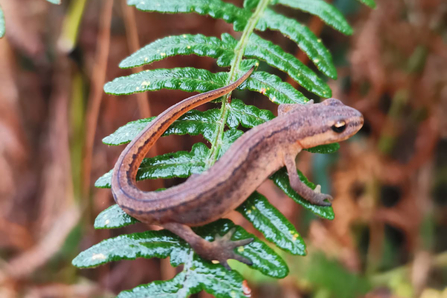
Smooth newt at Newbourne Springs – Jessica Ratcliff
Toad triumph
Warden Andy Hickinbotham was delighted to find this toadlet at Lound Lakes recently. Lound Lakes used to be famous for its toad crossing, where dedicated volunteers scooped migrating toads off Hall Road, moving them to safety and helping them on the perilous journey to their breeding pond. In the early 2000's toad numbers on the reserve dropped for an unknown reason, and they completely disappeared.
This little fellow was spotted crawling through the barn door and is the second toad Andy has seen at Lound in three years, with the first one being an adult. Fingers crossed it grows, finds a mate and breeds successfully.
Happy cows and happy wardens!
The recently topped marsh at Church Farm is looking lush and green after the recent rainfall. The cows certainly enjoyed munching on the lovely fresh regrowth!
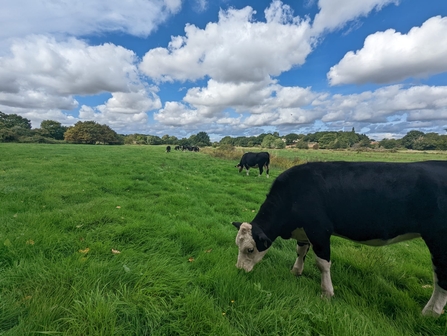
Cows grazing at Church Farm – Jamie Smith
Waders essential
The wardens were hoping their waders didn’t fill up with water during this extremely wet and muddy island management task at Hen Reedbeds. Island cutting and clearance at Hen Reedbeds aimed at creating ideal roosting and future breeding habitat for wading birds and ducks.
Triple team work
The West Suffolk wardens hosted a triple work party and green team this week. Volunteers from Little Ouse Headwaters Project, the Environment Agency and Suffolk Wildlife Trust helped with cutting, raking and clearing the fen meadow areas at Thelnetham Fen. It was a thoroughly rewarding day for all, with lovely weather and great results.

Volunteers at Thelnetham Fen – Will Cranstoun


